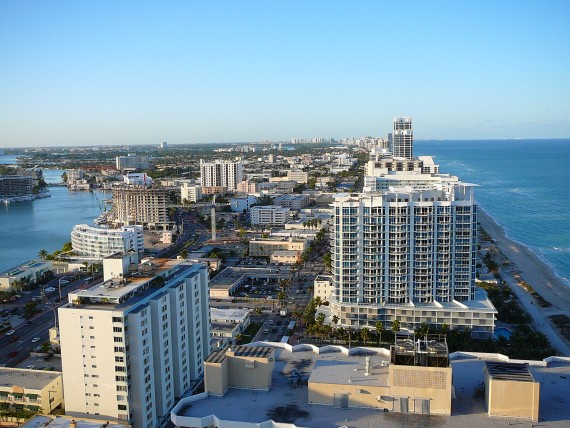With prices on the rise and a surplus of condo inventory, sales have begun to slow in Miami compared to the frenetic pace of last year.
Douglas Elliman’s quarterly report on South Florida’s markets shows that a bevy of new condo inventory has slowed mainland Miami’s absorption rate during the second quarter of 2015. At its current rate, it would take 8.7 months for the city’s stock to sell out, compared to 6.7 months during the second quarter of 2014, according to the data.
The median price of a condo has grown by almost 15 percent to $218,250, compared to the second quarter of last year. This is especially evident in neighborhoods like Coral Gables and Coconut Grove, which both saw the median sale prices rise in excess of 10 percent.
Jonathan Miller, author of the report, told The Real Deal that the data could be attributed to the plethora of new development that’s introducing more condos to the market. Newer inventory fetches higher prices, and there are now roughly 2,000 more active condo listings than in 2014.

Jonathan J. Miller, president and CEO of Miller Samuel Real Estate Appraisers and Consultants
Miller, CEO of Miller Samuel Real Estate Appraisers, said the data is by no means a sign that the market is unhealthy. It’s just not moving at the breakneck pace that was commonplace last year.
“The way I’d characterize the market now is going from frantic to brisk,” he said.
On the single-family home side of the market, the absorption rate actually quickened by a third of a month during the second quarter, while median sales prices rose by 11 percent to $300,000. That is likely due to a shrinking inventory of single-family homes in the market. Those rising prices have actually drawn more sellers into the market, Miller said.
This trend is mimicked in Miami Beach, which actually fared worse than the mainland. Sales volume has fallen 11 percent compared to last year, and the absorption rate for single-family homes and condos combined has grown to 10.8 months, versus 8.3 months last year.
Another interesting trend is the condos and houses sold are getting smaller. The average square foot per unit was down 2.5 percent and 9.8 percent for condos and homes, respectively. This is exaggerated in the luxury market — the top 10 percent price bracket. The average size of a luxury condo was 2,405 square feet, down 9.4 percent, and for a home it was 6,455 square feet, down 16.4 percent.
Miller chalked this up to seasonal activity. “The way I see it is that home sales come in waves,” he told TRD.
Some parts of South Florida are actually performing better than Miami, while other areas are struggling with depleting inventory.
Boca Raton, for instance, has an absorption rate of 4.9 months and 5.1 months for single-family homes and condos, respectively.
Palm Beach has hit its lowest supply of single-family homes in at least three years, Miller said. Only 105 homes were actively listed during the second quarter.
And in Fort Lauderdale, the housing market showed weakness compared to its condos. The median price of a condo unit rose 18 percent to $303,500, compared to the second quarter of 2014, while home prices have fallen a few thousand dollars each quarter to $290,000.
